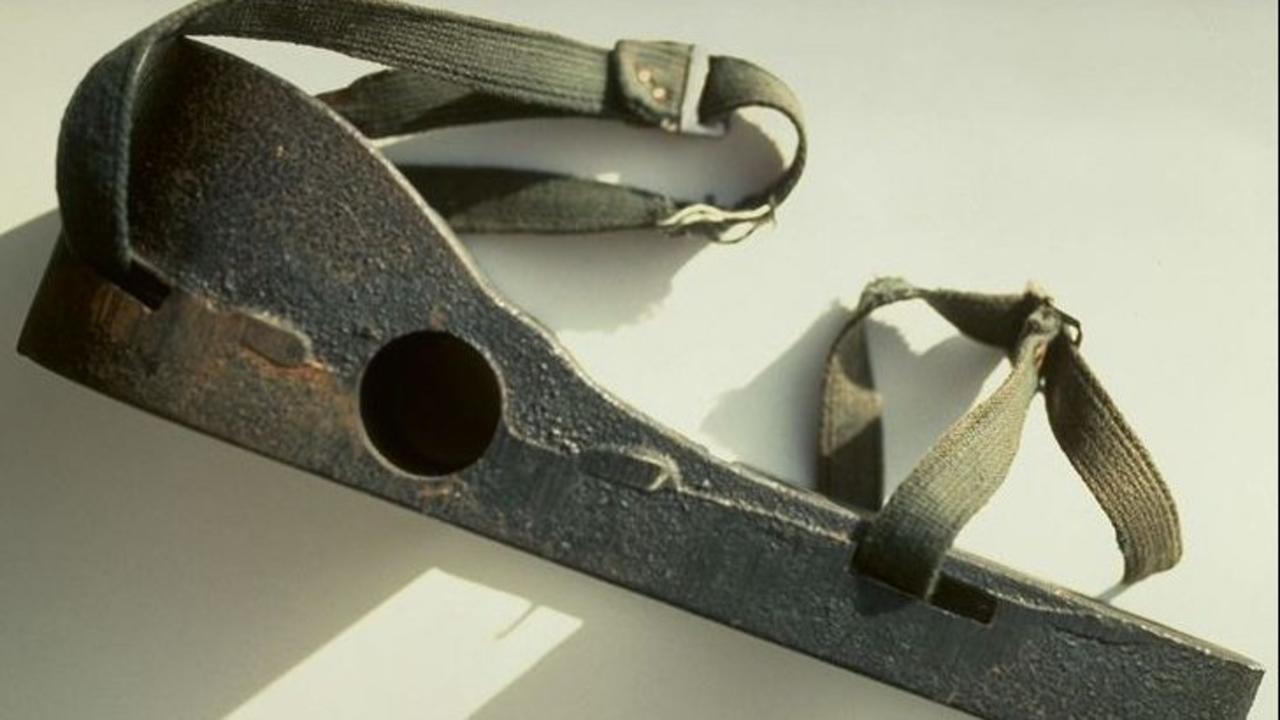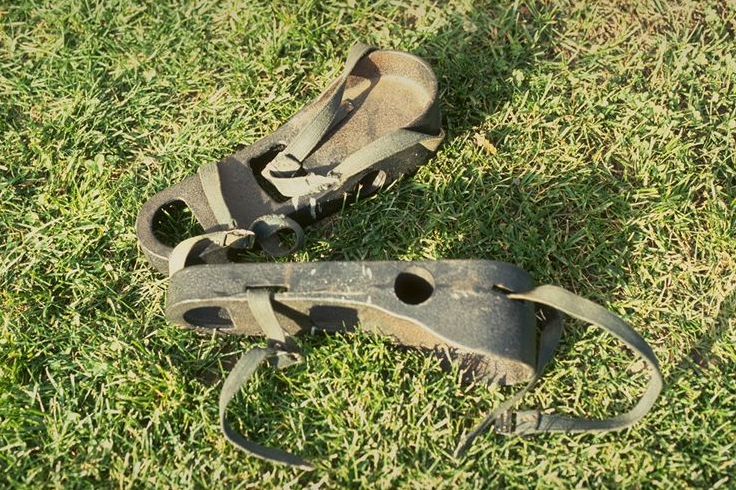Lead Shoes and Institutional Peonage
Aug 30, 2011
During my study of consumer/survivor/ex-patient history, I took these photographs at Vermont State Hospital. The staff person who gave me a short tour of the old hospital told me that in the late 19th and early 20th century, these heavy "lead shoes" were routinely attached to patients feet when they worked on the hospital's farm. The lead shoes were strapped over the feet and then a chain was inserted through the round holes, tethering both feet at no more than a stride's length apart. In effect, the lead shoes stopped patients from running away from the hospital while working in the fields.

It's hard to believe that decades after the 13th Amendment to the U.S. Constitution banned slavery and involuntary servitude, these shackles were used as part of the widespread practice of unpaid patient labor in state institutions. Historically, state hospitals relied on unpaid patient labor to operate. For instance, in 1969 the Pennsylvania Department of Public Health found that approximately 11,900 patients in state facilities were working as unpaid laborers and that 3,300 paid staff would have to be hired to replace their labor at a cost of more than $11 million dollars!
In 1973, a federal district court ruled in (Souder v. Brennan) that patients in mental health institutions must be considered employees and paid the minimum wage required by the Fair Labor Standards Act of 1938 whenever they performed any activity that conferred an economic benefit on an institution. Following this ruling, institutional peonage was outlawed as evidenced in Pennsylvania's Institutional Peonage Abolishment Act of 1973.
Many assume that the advent of modern psychotropic medications was the catalyst for deinstitutionalization in the U.S. However, large numbers of patients began leaving state institutions only after new laws made unpaid patient labor illegal. In other words, when patients no longer worked for free, the economic viability of many state institutions ceased and this led to the closing of many state hospitals. In an ironic twist, patients' unpaid labor had, for decades, helped prop up and support the existence of the very institutions that held them captive.


